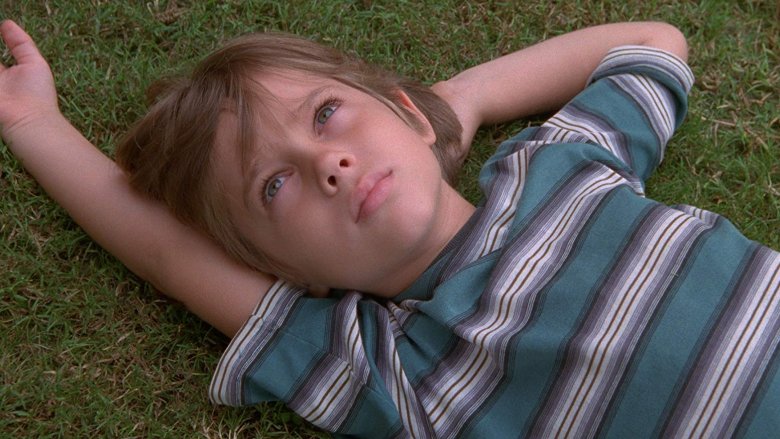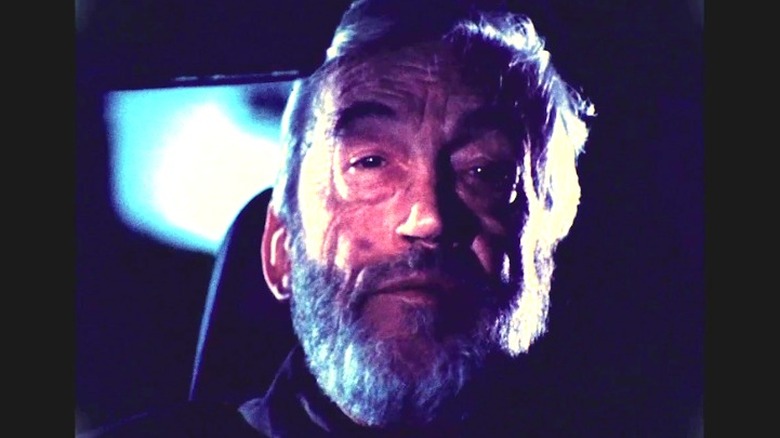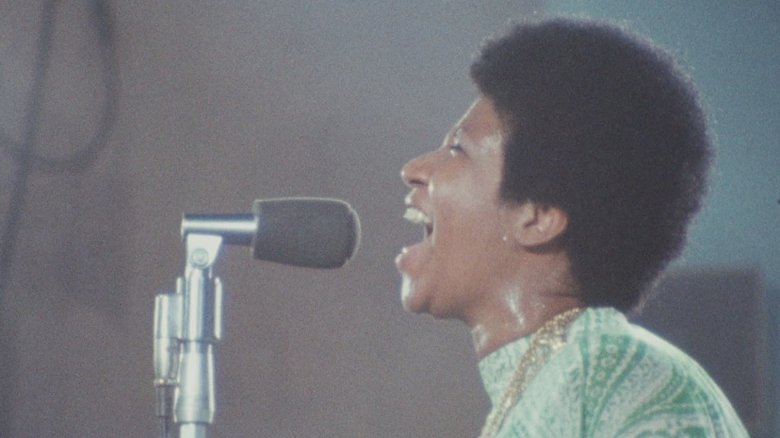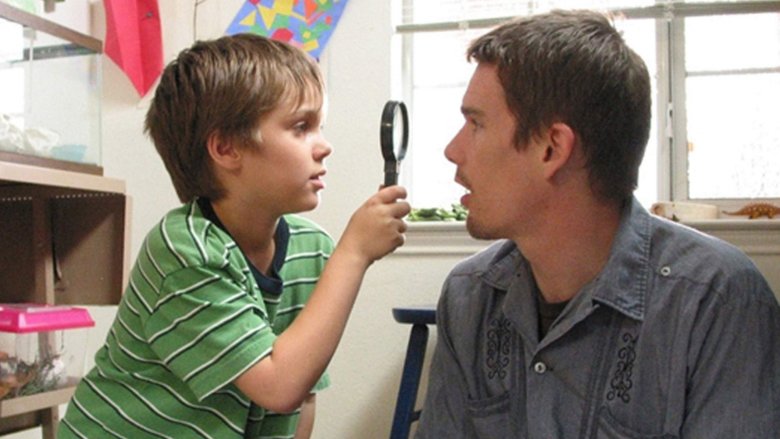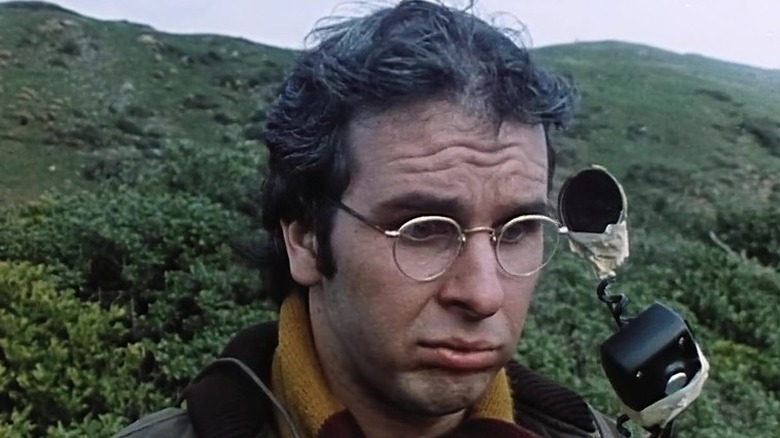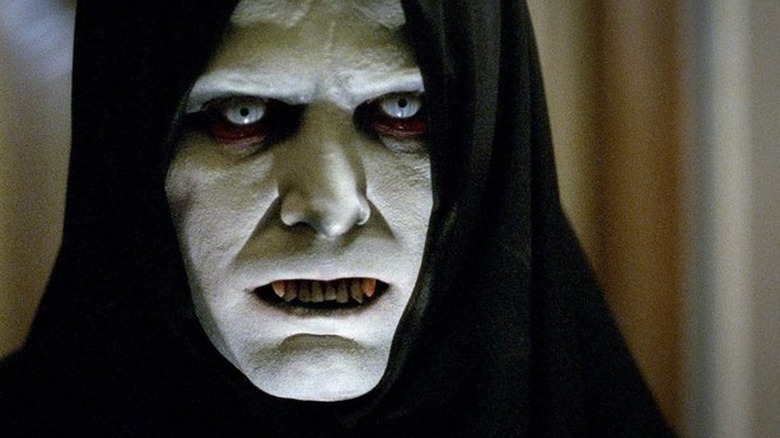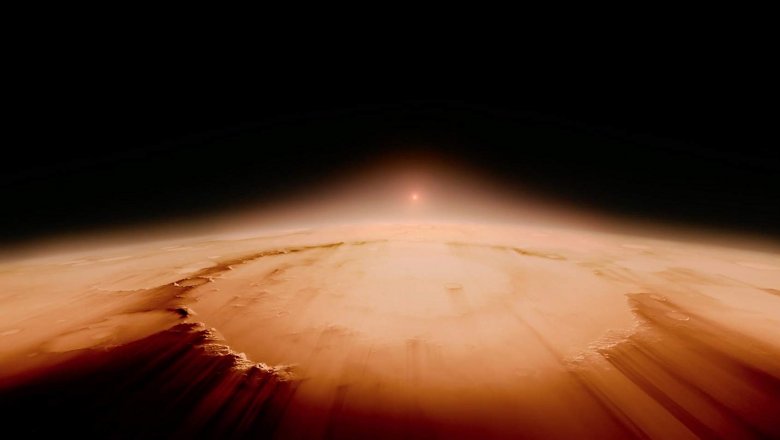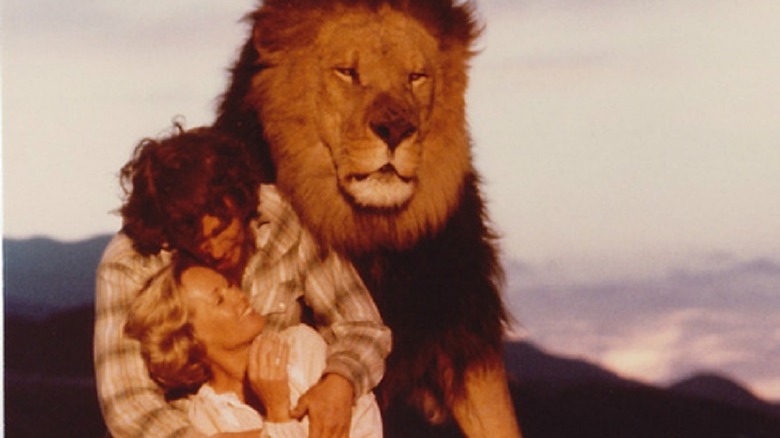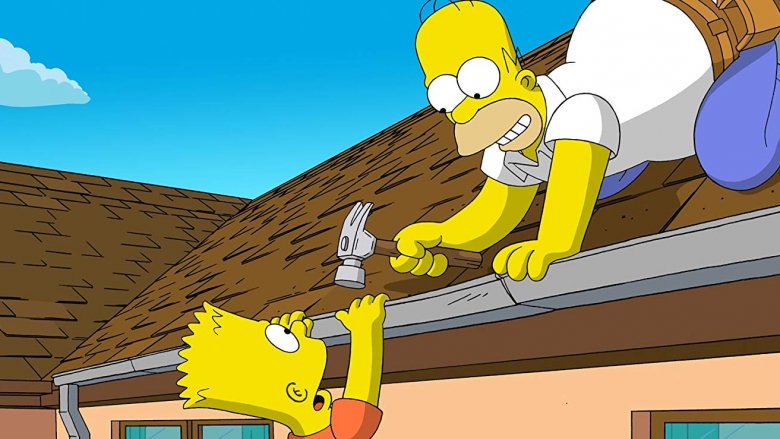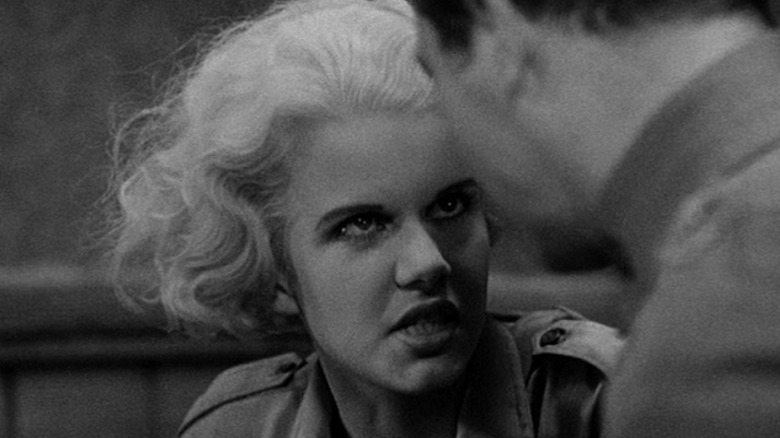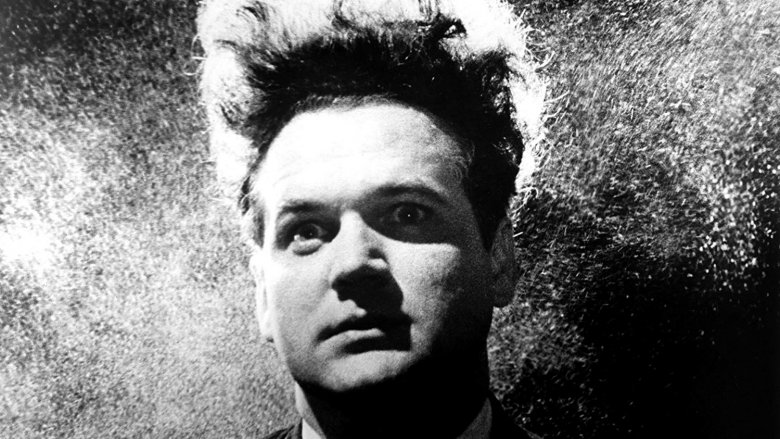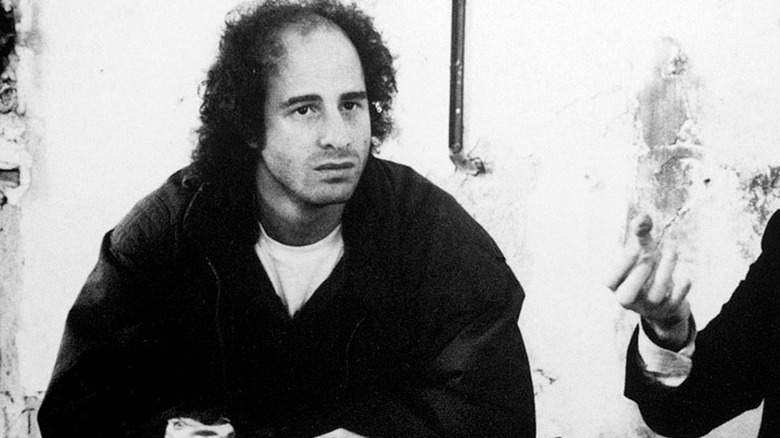Movies That Took Forever To Make
In the modern Hollywood landscape, most movies that arrive in American multiplexes are the product of a schedule, particularly when it comes to major tentpole blockbusters. Movies get pre-targeted release dates to hit a certain moneymaking window. Then the filmmakers go to work, they deliver the movie, and the movie is released on the same date the studio decided on years earlier, with a little wiggle room built in for delays of perhaps a few months. This isn't always the case, but it's a common tale. Film production is supposed to adhere to a schedule, and even when it doesn't, financial backers want as little delay as possible.
Then there are the films that, for one reason or another, don't play by those scheduling rules, the films with making-of stories that are often just as fascinating as the finished product. In some cases, the lengthy filmmaking process is by design. In others, it's the product of a filmmaker beholden to no particular financier, and as a result, they take their to finish something special. In still others, the actual filming didn't take long, but the process of finishing the movie and getting it released did. Whatever the case, some movies just take forever to make.
It took forever to see The Other Side of the Wind
In 2018, cinephiles everywhere finally got to see one of the great Holy Grails of film history: Orson Welles' final movie, The Other Side of the Wind. By the time it was finally released via Netflix — who kicked in the money to complete production and make a documentary about the long-buried project — it had been 48 years since Welles had started shooting the film, 42 years since he'd stopped, and 33 years since his death in 1985.
Welles began shooting Wind in 1970, and it was supposed to be both his Hollywood comeback movie and an exercise in a new kind of filmmaking, a meta-narrative that documented a famous director's last hurrah as he showed scenes from his unfinished new film to friends and admirers during his 70th birthday party. Welles shot the film off and on for the next six years, working whenever there was money and whenever the principal cast (including John Huston in the lead role) could be assembled. Eventually, money dried up, and the various financiers involved began disputing who exactly had a right to the footage. A combination of financial confusion and disinterest from investors then put completion of the film on hold for more than four decades, until The Other Side of the Wind finally premiered at the Venice Film Festival in 2018.
Amazing Grace was lost for over four decades
Sometimes all a film needs to take it from raw footage to a finished theatrical experience is a little tender loving care. The problem is that some movies have to wait decades for that care to arrive, and that was the case with Amazing Grace, the Aretha Franklin concert film that first screened just months after Franklin's death in the summer of 2018.
Franklin had always intended her 1972 live gospel album Amazing Grace, which she recorded over two nights of performances at the New Temple Missionary Baptist Church in Los Angeles, to be a movie. Director Sydney Pollack, then best known for films like They Shoot Horses, Don't They?, was hired to direct the documentary, and he filmed both nights of Franklin's performances. Though the liner notes of the album promised the filmed version was coming, it never materialized, and the footage sat in a vault for decades.
In 1990, an Atlantic Records employee named Alan Elliott grew fascinated with the footage, and he began talking to Pollack about possibly resurrecting the film. It took years and some re-mortgaging of his house for Elliott to even get the footage, only to then find that part of the problem was that Pollack hadn't made efforts during filming to sync the picture and sound. Even after a rough cut was assembled, legal trouble from Franklin herself followed, until Elliott was finally able to come to an agreement with the Queen of Soul's family. Amazing Grace was released worldwide in 2019.
Boyhood took 12 years to make
When most directors move ahead with production on a film, they're not expecting the resulting work to take more than a decade, and most movies that take forever to hit theaters arrive at their lengthy production times through sheer circumstance.
With Boyhood, Richard Linklater knew exactly what he was doing when he launched a film production that would actually follow a child from first grade all the way through senior year of high school. Linklater began thinking about the idea that would become Boyhood in the late 1990s, when he considered making a film about childhood but became frustrated by the "natural limitation" of casting a young actor at a single age. But in 2001, Linklater had a revelation — film a segment of the movie each year and allow the young actor at the center of his story to age in real time. Thus, Boyhood was born. Starring Ethan Hawke, an Oscar-winning Patricia Arquette, and Ellar Coltrane as the focus of the film, Linklater's sprawling story was released to massive critical acclaim in 2014.
Peter Jackson spent forever working on Bad Taste
Long before he was the Oscar-winning master behind The Lord of the Rings (and a filmmaker who regularly commands nine-figure budgets with all the latest visual effects), Peter Jackson was a kid from New Zealand who wanted to make movies his way, no matter what. His early films reveal a seemingly bottomless well of DIY cleverness and wit, not to mention buckets of blood, and that all began with Bad Taste.
Jackson's debut feature film, a sci-fi comedy about aliens invading Earth to harvest humans to turn them into fast food, Bad Taste was made for about $25,000, and Jackson himself served as cinematographer, special effects wizard, co-editor, and actor, as well as producer, co-writer, and director. What started as a short film ballooned into a feature as Jackson poured his own money from working as a photo engraver at a local newspaper into the project. To make the production work with everyone's day job, Bad Taste was shot mostly on weekends, and as a result, the making of the film dragged on for four years. Bad Taste was released in 1987, and it introduced Peter Jackson to the world as a genre force to be reckoned with.
The Evil Within was a 15 year journey of monsters and money
If you happened to be scanning the latest horror titles available to streaming on-demand at any point in 2017, you might've passed by The Evil Within without giving it a second glance. Or perhaps you watched this surreal horror film about a boy who's compelled by a creature in his mirror to commit murders, and then you didn't give the story behind it another thought. Upon closer inspection, though, The Evil Within is the passion project of a millionaire who spent more than a decade making the film, only to die before it was finished.
The Evil Within began as The Storyteller, a film devised by Getty oil heir Andrew Getty, based on his own nightmares. Getty wrote, directed, and financed the film himself, and he shot The Evil Within off and on between 2002 and 2007. He devised his own visual effects that included custom camera rigs and animatronics, and he converted a room in his house into a post-production office where he spent years going over every frame.
Getty died in 2015 at the age of 47, with only editing and some color work left to go on The Evil Within. Producer Michael Luceri "made it his mission" to complete the film on Getty's behalf, and the passion project that cost Andrew Getty millions of dollars of his own personal fortune was finally released in 2017.
Terrence Malick took forever to finish Voyage of Time
We've come to expect two things from Terrence Malick over the course of his unorthodox and fascinating career. First, his films will be like nothing else we've seen. Second, we have no idea how long he'll take to make them or what form they'll finally arrive in. That's been true for years, and it was true of his documentary Voyage of Time, an ambitious undertaking that attempts to chart the course of the life and eventual death of our entire universe.
Voyage of Time began its conceptual life all the way back in the 1970s, but it didn't officially enter production until 2008. Malick worked on the film for the next several years, digging deep into research and collaborating with scientists and visual effects artists alike, and he interspersed work on Voyage of Time with other projects as his filmmaking career picked up steam. After legal issues with investors, IMAX stepped in to provide funding for Malick to finish the film, and Voyage of Time finally hit screens in 2016. Even that proved to be unorthodox, as the film arrived in not one but two versions: a feature-length film narrated by Cate Blanchett and a 40-minute "IMAX Experience" cut narrated by Brad Pitt.
Roar involved a lot of time and a lot of stitches
Billed as "the most dangerous movie ever made" when it was given its first United States release by Drafthouse Films in 2015, Roar is a film with a making-of story that's even wilder, and bloodier than what you see onscreen. The plot follows a man who decides to share a home with various lions, tigers, and other big cats in the hopes of both studying them and keeping them safe from poachers. As for the film itself, it began life in 1969 when director Noel Marshall and his wife, actress Tippi Hedren, visited Mozambique. While there, they saw an abandoned house that had been taken over by lions, and the idea for a film about a houseful of big cats just grew and grew.
Marshall and Hedren began filming Roar on their California ranch with the idea that they would shoot for three months, and the production ultimately ballooned to a five-year process thanks to, among other things, 70 members of the cast and crew (including Hedren's daughter, Melanie Griffith) suffering serious injuries at the hands of the cats. And yeah, we're talking over 100 lions, tigers, and other big predators (oh my) just running around, biting people and causing all sorts of misery. After the bloody shoot, it took six more years for the film to find a distributor, and Roar received an international release in 1981.
It was 20 years before we got The Simpsons Movie
It remains popular today, but if you were aware of The Simpsons in the early 1990s, you remember a time when the show seemed like the biggest thing in the world. After all, the series spawned a merchandising empire and grew into a full-blown pop culture phenomenon. Even back then, fans wondered if the television show would ultimately make the leap to the big screen. And yeah, it finally happened, but it took nearly 20 years.
Though talk of what would become The Simpsons Movie began way back in the '90s — with concepts ranging from a Fantasia parody to the idea that would eventually become "Kamp Krusty" — creator Matt Groening and company didn't really buckle down to work on the film until 2001. Over the next four years, various story ideas were generated, and ultimately, the show's writers came up with 100 different drafts of the script, if not more, and a deal with the studio guaranteed that they could abandon any story if it didn't feel right. In 2005, the cast held a table read, and in 2007, The Simpsons Movie was finally released.
Hell's Angels was a movie that cost years, money, and lives
In the early decades of Hollywood, movies were made faster than they are now. For example, Howard Hawks, one of the legendary directors of Hollywood's Golden Age, had four films released in 1932 alone. Still, even in the 1920s and 1930s, some filmmakers took a little longer, even if they didn't always intend to. This was the case with Howard Hughes and Hell's Angels.
Hughes began work on the film as a producer in 1927, and he intended to produce a visual spectacle unlike anything the still-young film industry had seen at that point. His efforts proved costly. Over the next year and a half, he sunk over $2 million into the production, divorced his wife, and lost two of his stunt pilots and a mechanic to accidents during the filming of the aerial sequences. Then, to make things more complicated, the advent of "talkies" meant that his film would suffer financially if released as a silent picture. So Hughes poured more money in to reshoot the dialogue sequences, and he fired his female lead Greta Nissen because of her thick Norwegian accent. Jean Harlow stepped in for what would become a star-making role, and after Hughes filled in as director himself when two other filmmakers departed, Hell's Angels was finally released in 1930.
Eraserhead was a debut film that didn't debut for years
There are a lot of stories of debut features taking a long time to complete, in part because there's often so little money to go around. A young director with ambition and vision will decide to make a movie, save up a little cash to get started, shoot until that money runs out, and then wait until they have more money to come back to the film. It's a common tale, but even with that in mind, the making of David Lynch's surreal first feature, Eraserhead, was a notably extended affair.
The making of Eraserhead took five years, and much of the money to make the film came from the crew, including Catherine Coulson — the future Log Lady on Twin Peaks — who was married to Eraserhead star Jack Nance and served as Lynch's assistant director on the film. Lynch threw in whatever money he could from his own job, but it took three years before the American Film Institute joined the fray and gave Lynch, then an AFI student, a grant to keep going. Lynch and company shot whenever scheduling and budgetary concerns would allow, and even after the filming was completed, Lynch took another year just to work on the sound. Hailed as "the greatest student film ever made," Eraserhead was finally released in 1977, and it launched the director's career.
It took Jim Jarmusch almost two decades to serve up Coffee and Cigarettes
Sometimes a finished film takes years to arrive because the director didn't know he was going to make a feature film at the time he started. That's the case with Jim Jarmusch's 2003 anthology film Coffee and Cigarettes, which combines nearly a dozen short stories where an all-star cast has various conversations over smokes and cups of joe.
The film began shooting in 1986, when Jarmusch made "Coffee and Cigarettes," a short film for Saturday Night Live starring Roberto Benigni and Steven Wright. A second short film, starring Joie and Cinque Lee and Steve Buscemi, arrived three years later. A third installment in the series, starring Tom Waits and Iggy Pop, arrived in 1993 and won the Palme d'Or for Best Short Film at the Cannes Film Festival.
Even after making three shorts in the "Coffee and Cigarettes" series in seven years, it took another decade before Jarmusch realized there might be a feature film somewhere in the thematically connected narratives. In 2003, the idea arrived, and Jarmusch began shooting new stories for the film. Coffee and Cigarettes was released in 2004, nearly 20 years after the first short film, and featuring more big names like Steve Coogan, Bill Murray, and Cate Blanchett.
